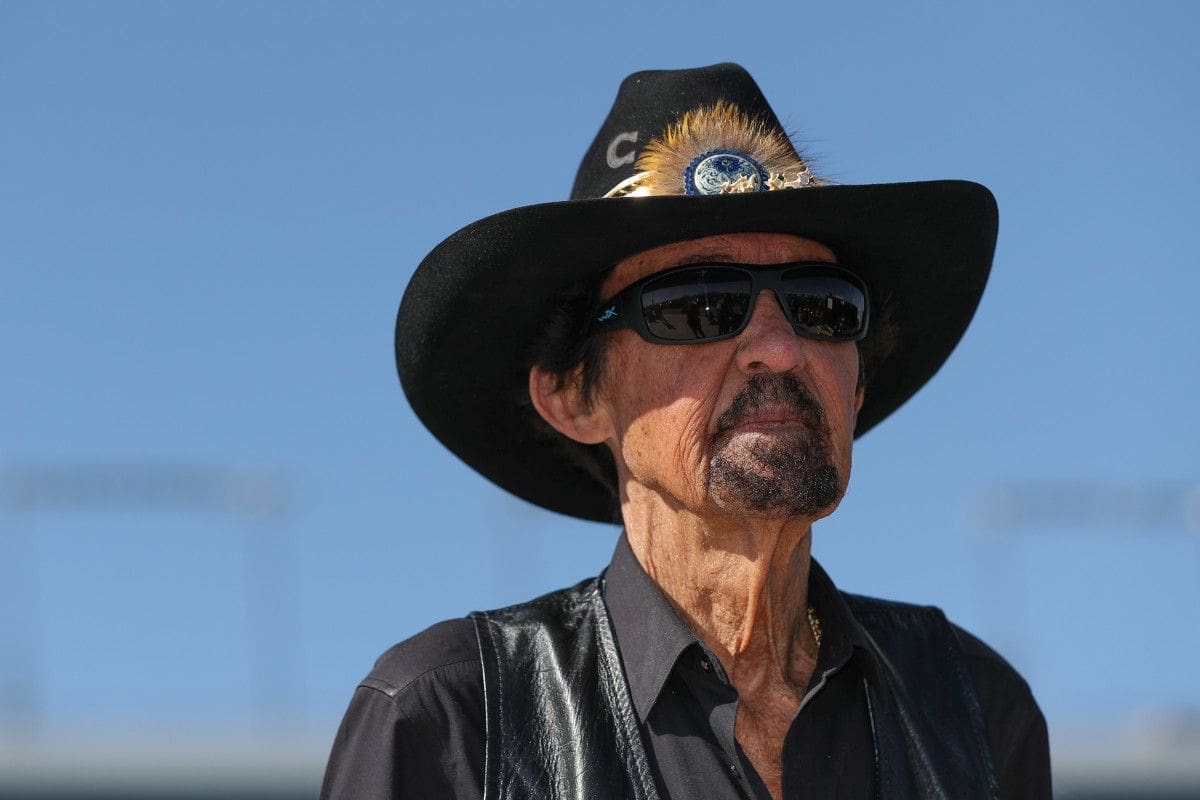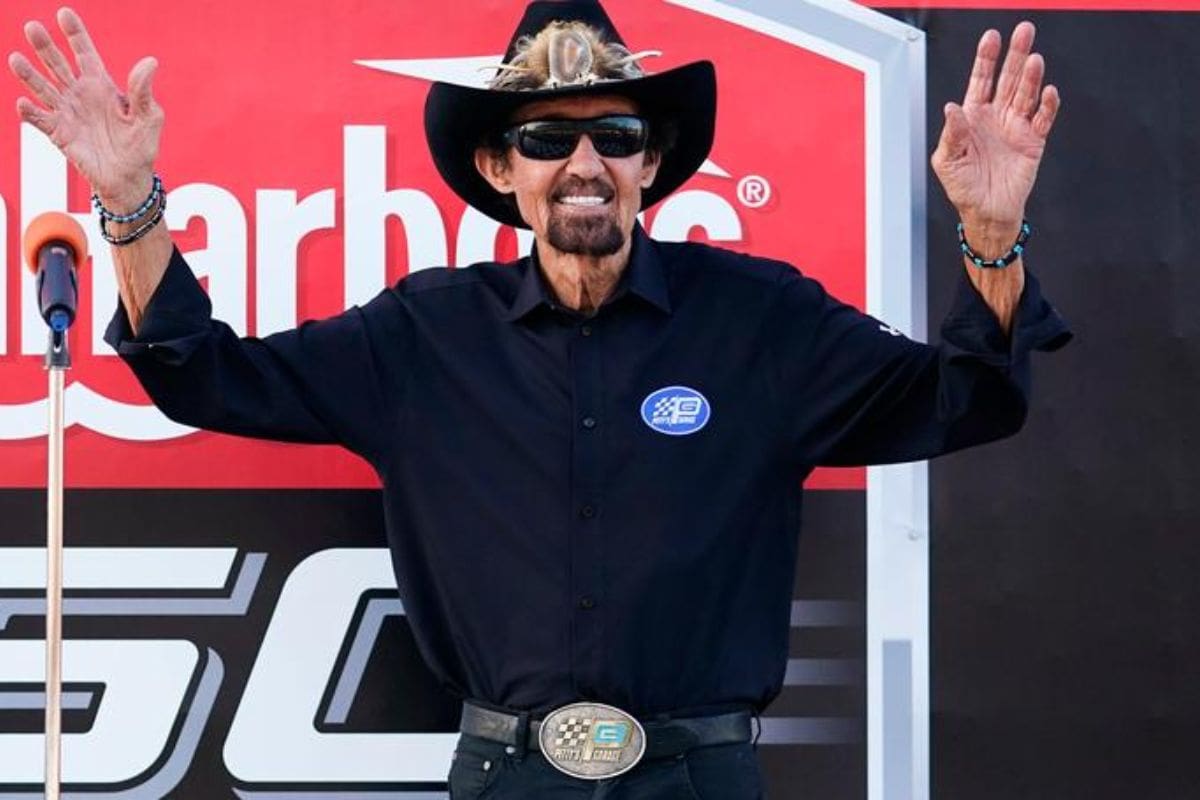Richard Petty Investigates Initial Tire Issues: Richard Petty, a name synonymous with NASCAR excellence, has turned his attention to a pressing issue affecting the 2024 season: initial tire problems that drivers are grappling with on different tracks. Drawing from his unmatched racing expertise, Petty’s investigation tackles the complexities of tire wear and degradation, and their profound influence on race strategies and outcomes. His analysis promises to offer a unique perspective on how these tire challenges are reshaping the sport’s competitive landscape. As drivers express their concerns and adapt, Petty’s findings might just hold the key to understanding the future trajectory of NASCAR racing.
Key Highlights
- Richard Petty analyzed tire performance on repaved surfaces like Iowa Speedway, noting improved multi-groove racing and variable speeds.
- Petty emphasized the impact of tire degradation on race strategies, referencing driver adaptability at tracks like Bristol Motor Speedway.
- Petty observed that tire wear issues have historically influenced race outcomes, citing the significant 2008 Brickyard 400.
- He highlighted the importance of continuous tire technology innovation to address varying track conditions and performance demands.
- Petty stressed the need for teams to adjust setups and strategies dynamically to manage tire wear effectively during races.
Tire Issues in the 2024 NASCAR Season
In the 2024 NASCAR season, drivers and teams faced significant challenges as persistent tire issues, including rapid wear and blowouts, disrupted numerous races and left experts scrambling for solutions. The consistency and reliability of tire performance became central to the narrative of the season, casting a shadow over the competitiveness and safety of the sport. The teams found themselves in a constant battle, not only with their rivals on the track but also with the unpredictable nature of their tires.
At the heart of the controversy was Goodyear, the exclusive tire supplier for NASCAR. The tire problems initially came to a head at the Bristol Motor Speedway, a track notorious for its abrasive surface and high banking. During this race, multiple teams experienced sudden tire failures, leading to accidents and strategic upheavals. Goodyear’s racing director, Greg Stucker, voiced his concerns, stating, ‘We’re trying to understand what’s different, why the track is behaving differently than a year ago?’
The issue was compounded by the fact that the problem wasn’t isolated to Bristol. Other tracks, known for their unique stresses on tires, such as Atlanta and Darlington, also saw an unusual rise in tire-related incidents. Engineers and crew chiefs were thrust into a relentless cycle of analysis and adjustment, tweaking car setups and tire adjustments in a bid to mitigate the risks. Despite these efforts, the unpredictability of tire performance continued to wreak havoc, challenging even the most seasoned NASCAR veterans.
Impact of Tire Issues on Races
As tire issues dominated the 2024 NASCAR season, their impact on races was significant, influencing the outcomes and the strategies employed by teams and drivers.
The race at Bristol, for instance, epitomized the chaos and excitement that tire problems can introduce. With a record 54 lead changes among 16 drivers, it became evident that tire degradation played a crucial role. The nine cautions spanning 98 laps further highlighted the severity of the issue, as teams grappled with the unpredictability of tire performance.
The effect of these tire issues reverberated throughout different aspects of racing strategy. Teams were compelled to constantly reassess their pit stop schedules, balancing the risk of staying out on deteriorating tires against the time lost in pit lane. This dynamic led to a more variable race strategy, where decisions made in the heat of the moment could significantly alter the race outcome. Drivers, too, had to adapt their driving styles, often opting for a more conservative approach to preserve tire integrity over longer stints.
Moreover, the unpredictability brought an element of excitement into the races. For instance, the frequent lead changes at Bristol highlighted how tire management could become a decisive factor in winning or losing. However, this volatility also increased the potential for accidents, as evidenced by the numerous cautions. The chaos on the track demanded heightened vigilance from drivers and teams alike, fostering a more intense and strategic racing environment.
Nevertheless, as the season progressed, NASCAR Cup teams demonstrated remarkable adaptability. By exploring data and refining their approaches, they steadily began to mitigate the tire-related challenges, restoring a semblance of predictability and control to the races.
Richard Petty’s Perspective on Iowa Speedway
NASCAR legend Richard Petty provided a detailed perspective on the recent race at Iowa Speedway, crediting the engaging nature of the event to the track’s distinctive features and the pre-race tire test outcomes. Petty highlighted how the multi-groove layout of the track allowed for thrilling side-by-side racing, even as drivers faced initial tire issues. The track’s unique characteristics, combined with the unexpected performance gains during the event, created a thrilling spectacle for fans and competitors equally.
Petty’s analysis emphasized the importance of the pre-race tire test, noting that the track surface had been recently repaved, which significantly impacted tire performance. During the actual race, cars managed to run a full moment quicker than during the tire test, which contributed to some of the early tire challenges. However, this unforeseen increase in speed also led to a more dynamic and competitive race environment.
“The way it wound up, it made a really good race out of it. Everybody had run on the two-groove deals, but the cars ran three abreast. The track was good enough and they’d paved the track where the cars really need to stick. They said they’d had a tire test out there, it was already paved. When the cars went back, they ran a second quicker than what the tire test was. That’s one of the reasons why they had a little bit of tire problems to begin with.” – Petty
- Enhanced Track Surface: The recent repaving of Iowa Speedway provided a smoother, more adhesive surface, allowing cars to maintain higher speeds and stability.
- Multi-Groove Racing: The track’s design facilitated exciting three-abreast racing, contributing to the event’s overall entertainment value.
- Tire Performance Variability: The discrepancy between tire test speeds and race speeds highlighted the complex interplay between track conditions and tire durability.
Petty reflected on these elements, stating, ‘The way it wound up, it made a really good race out of it.’ His observations highlight the intricate balance between track preparation, tire technology, and race strategy, demonstrating how these factors coalesce to shape the racing experience.
View this post on Instagram
Driver Reactions to Tire Issues
Racing drivers, grappling with the unexpected tire performance at Iowa Speedway, provided honest and insightful reactions that highlighted the profound impact of the freshly repaved track on their racing strategies and complete experience. The unpredictability of tire wear and performance was a prominent theme, as drivers navigated the complexities introduced by the new surface.
Ricky Stenhouse Jr. openly remarked on the expedited repaving process and its implications. His comments highlight the challenge of adapting to rapidly changing track conditions, a reality exacerbated by the harsh Northern winters that affect track integrity.
“They barely got it done in time I think for the test. I mean it was pretty quick. I know the winters are harsh up here. And obviously, other racetracks that we have up in the north are kind of the same way. I don’t know the for sure reasons why they had to do it, but hopefully it races good.” – Stenhouse Jr.
Chase Elliott, from Hendrick Motorsports, emphasized the strategic adaptation required by the evolving track surface. His insights point to the tactical necessity of exploring different lanes and the gradual acclimatization to the newer surface.
“I do think the second lane will be decent at some point, but it will definitely need to be worked in. It kind of has that fresh repaved shine to it that is not very inviting to want to go run on. But in the race, you’ll certainly be forced to run higher and I think that’ll end up working it in.” – Elliott
These drivers’ reactions reflect a blend of cautious optimism and strategic recalibration, necessary for mastering the intricacies of the newly repaved Iowa Speedway. Their experiences highlight the constantly changing nature of racing, where adaptability and insight are crucial.
Historical Context and Conclusion
Understanding the challenges drivers faced with tire issues at Iowa Speedway benefits from examining the historical context of tire performance in NASCAR, where the interplay of track conditions, tire construction, and race strategies has often shaped the outcome of races.
Tire wear, though a perennial issue, has moments that stand out for their severity and impact on race dynamics. The 2008 Brickyard 400 at Indianapolis Motor Speedway is a significant example, often cited as one of NASCAR’s most problematic races. The newly repaved track, combined with the Car of Tomorrow and the specific tire construction, led to excessive tire wear, requiring numerous unscheduled pit stops and ultimately compromising the integrity of the competition.
In Iowa, incidents such as Jeb Burton’s right-front tire failure on lap 73 and Austin Hill’s similar issue on lap 218 emphasize the persistent nature of tire-related challenges. Hill’s honest admission highlights the complexity of diagnosing tire failures, pointing to potential factors such as aggressive setups, debris on the track, or inherent tire design issues. His remarks resonate with a broader narrative in NASCAR where tire management is a critical component of race strategy.
“I know there’s something going on. I don’t want to lay the blame on Goodyear. It could be the teams being aggressive. We could’ve run over something. We had issues with the left front (blistering) all day.” – Hill
- Track Surface Evolution: Changes in track surfaces, such as repaving, can significantly affect tire wear and performance.
- Tire Construction and Design: Variations in tire construction can lead to different wear patterns and longevity.
- Race Strategy Impact: Teams must continuously adapt their strategies to account for tire performance, emphasizing the importance of agility in decision-making.
News in Brief: Richard Petty Investigates Initial Tire Issues
The examination of tire issues in the 2024 NASCAR season reveals significant implications for race dynamics and strategies. Richard Petty’s insights, particularly regarding Iowa Speedway, emphasize the critical role of tire performance in shaping competitive outcomes.
Driver reactions further shed light on the challenges faced on the track, while historical context enriches the understanding of these issues.
This investigation highlights the necessity for ongoing analysis and adaptation within the sport to address evolving tire performance challenges.
ALSO READ: Richard Petty’s Heartfelt Tribute to Late Grandson on Anniversary



